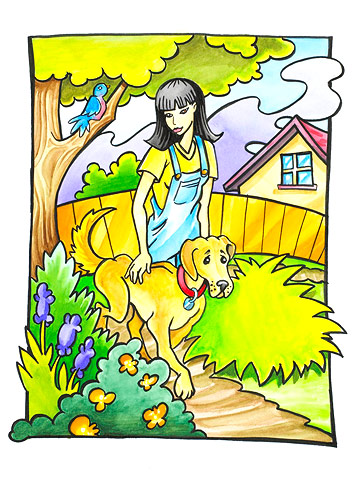






Throw your dog a proverbial bone by planting to give him a sense of boundary. Space plants close together in areas you want to designate as off-limits, and understand that the rest of the yard is fair territory. If you leave enough space for him to run and play, accept that that's precisely what he will do.
Do you need to patch a bare spot in your lawn? Use our calculator to figure out how much grass seed you need.
continue reading belowAnother way to keep your pet out of certain areas is to choose shrubs and small trees over shorter, more delicate plants. Shrubs such as bluebeard, potentilla, and lavender add color to a landscape and grow a little more than a foot tall, so it's hard for your dog to trample them. Bay and small firs make great low-profile trees and add interesting, dog-resistant shape to your landscape.

Just as you would put in a sandbox for kids, consider putting in a digging box for your dog. Fill it with soil or a soil-and-sand mix, and create some sort of border as a visual cue. If he digs outside of the boundaries you've set, be sure to admonish him and show him to the digging box. Bury bones and other toys in the soil to make the dig even more fun!
High levels of nitrogen in dog urine can be extremely harmful to grass, so create a space with gravel or mulch where you would prefer your dog do his business. Something vertical (a more attractive replacement for a fire hydrant) can help your dog identify the area quickly. As with any potty training, be sure to reward your dog when he uses the correct area, and reprimand him when he does not.

Even with these precautions, having a pet is going to take a minor toll on your lawn, so be prepared to perform regular maintenance. Fill in bad patches of grass with seed or sod, and be sure to use plenty of water and fertilizer to keep grass healthy and strong.
It will take time for your dog to adjust to proper lawn behavior, so supervision and training is key. If you're away during the day, keep him inside until you return home and can monitor backyard play. Offer plenty of positive reinforcement when he follows the rules, and let him know when he doesn't. With the help of diligent training early on, your dog will eventually learn to stay within bounds, and you'll have a yard that you both can enjoy!
Copyright © www.100flowers.win Botanic Garden All Rights Reserved